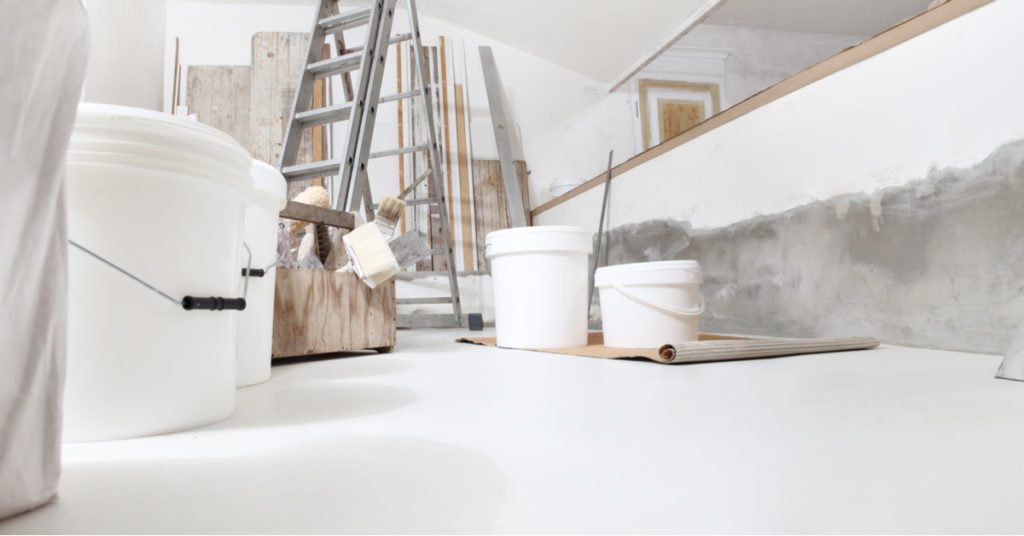Paint Primer When and Why?
If you are planning to paint your home, it is essential to know when and why you need to use a paint primer.
Paint primers are used underneath the visible finished surface of a premium paint job for both interior paint and exterior paint.
Painting Over a Painted Wall
You are excited to paint a room with a fresh new color, or perhaps you are keeping the same color and want to freshen it up. Do you know that you may need to prime the wall first using a paint primer?
If the previous paint has a flat finish and there are no imperfections in the walls, you can get away with not applying a paint primer first, especially if the new color is the same or similar. However, if the existing paint has a semi or gloss finish, has been spackled or other, it is recommended to prime the wall first for the best results.
Painting Cement, Drywall and Wood

If you are painting a brand new surface such as wood, cement, or drywall, then priming the wall is necessary. In new construction, paint primer is the first layer of paint on the wall. Paint primer is usually white or a pale color which will not show once your surface is completely painted. However, it can be tinted any color you need.
What Paint Primer Does

Paint primer is formulated to form a barrier between the wall and the finished layer of paint. Primer does several jobs.
- First, paint primer helps your paint color adhere appropriately to the painted surface. It also seals porous surfaces such as wood that might absorb the solvent from the paint. This allows the paint to dry correctly.
- Primer also acts as a filler, smoothing out the grain in wood or uneven surfaces so that the paint goes on more evenly.
- Using paint primer will often mean that you can use fewer coats of paint color to cover your wall surface.
Seals Porous Surfaces
Materials such as wood, cement and drywall need to have a primer painted on them before the paint color because they are porous. If you do not use a paint primer, your paint will not adhere properly and will peel or dry prematurely.
Non-porous surfaces such as plastic do not need a primer unless you are changing the color drastically.
For Adherence
When painting over existing paint, a primer can help even out areas that needed spackling. It allows the new paint to adhere better over worn-out spots.
Seals From Moisture Damage
Another reason to use primer is to seal your surface from moisture damage. Paint primers are recommended for rooms that have a lot of moisture, such as bathrooms. Too much moisture can cause paint to bubble and peel. In addition, wood is especially prone to absorb moisture from the air if not sealed properly.
Need More Information or Ready To Get Started?
If you are not sure whether you need to use a paint primer for your painting project, you can discuss this question with your painting contractor. Professional painting contractors know when it is needed and when it is not.
You must note that exterior finishes and paints do not always work the same way as interior paints.
To get the best results for both interior and exterior, you must hire a painting contractor with the knowledge and experience needed.
You may think all painting companies are the same, but they are not. As there are great painters, there are not so great painters. The same applies to paint primer. Some primers are of high quality, and there are those of lesser quality. Your local store may want the sale of a specific type of primer, whereas a reputable painting contractor who provides high-quality craftsmanship will also know which paint primer is best.
Are you ready to get that room freshened up? Then, get in touch with Carolina Blue Painting. We are that great painting company with the knowledge and experience needed to give you a fantastic outcome.

